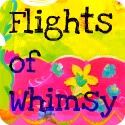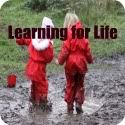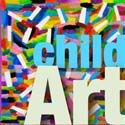WELCOME TO THIS FORTNIGHTS OUTDOOR PLAY LINK-UP!
As Spring has arrived in Melbourne Australia, we have been having a lot of conversations with the children about insects and other small creatures we might find in the garden. We have spent time studying this wonderful book, Backyard wildlife (the link is to a more recent edition than ours), which assists children to identify a number of common garden insects and determine whether or not they are safe to handle. Just yesterday, we were talking about stick insects, and today a group of boys were ‘blown away’ by finding one in our garden! Their excitement could not be contained!
According to the Australian Museum, “There are estimated to be approximately 150 species of phasmids in Australia with a total world wide number of 3000 with new species being discovered by scientists regularly.
Phasmids are found in a range of habitats and have adapted to both resemble and feed on a variety of plant species. Some such as the Goliath Stick Insect are found in the forested areas of eastern Australia there are also species which occur in arid, coastal and monsoonal environments. Most phasmids feed on either or both Eucalyptus (gum trees) and Acacia (wattles) however some are specialists such as the Peppermint Stick Insect, Megacrania batesi, which only eats the leaves of the Screw pine, Pandanus tectorius, and receives its name from the peppermint-like smelling secretion it produces when alarmed.
Australian stick Insects range in size from a few centimetres long to the longest species; the Titan Stick Insect, Acrophylla titan, which can grow up to 250mm from head to tail, and often appear longer when the front legs stretched forward.”
We observed the stick insect as it walked along the branch with its long twiggy thin legs. Occasionally it fluttered its wings, giving us a view of there delicate transparency. We allowed it to walk up our bodies, and even into our hair! We noticed that it tended to rock its body back and forth and the children decided that it was dancing! We were amazed by just how much it looked exactly like a stick and talked about how cleverly it was camouflaged.
We compared our stick insect to the images we found in our book. It looked identical to one of them!
After spending some time marveling at the uniqueness of our stick insect, we returned him to a tree in our garden, hopeful that we might meet him again someday.
What a great experience for the children!
MY FAVORITE POST FROM LAST FORTNIGHTS LINK UP: PAINTED ROCKS GAME
from ‘One Perfect Day’ (click on the image below to access post)
How did your kids play outdoors this week?
Any kind of children’s outdoor play-related posts are welcome!
We’d appreciate it if you included a link back to this post (either in your post or sidebar) to help us spread the word about the importance (and fun!) of outdoor play! In return, we’ll gladly further share your post on Facebook/ Twitter/ Pinterest. Please feel free to grab the Outdoor Play Party button from the sidebar and/or include a text link back.
Please note that by contributing you are giving permission for an image and link to your post to be republished if featured. (If you have been featured, please feel free to grab the ‘featured’ button from the sidebar.) Share your ideas for outdoor play activities with us every other week!





























































